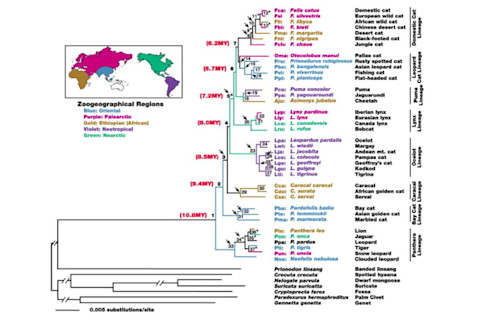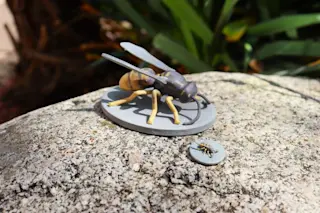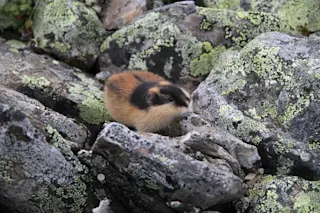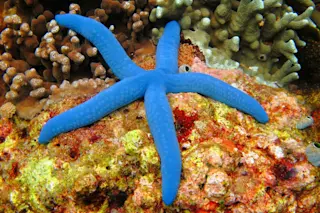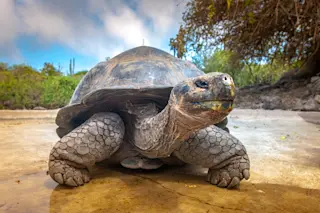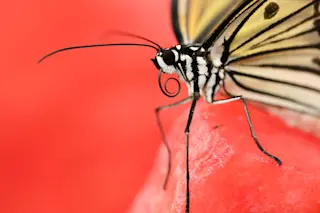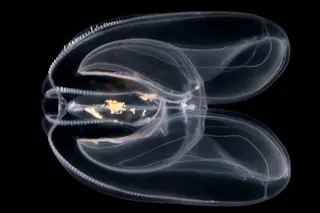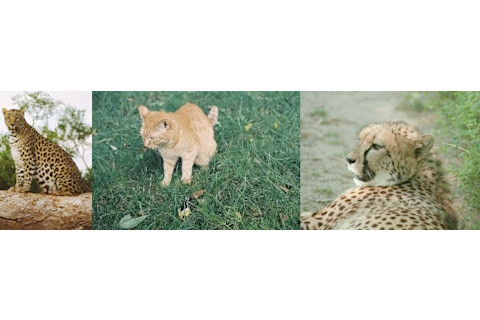
As the proud owner of a fine cat, Tino, I'm happy to join the ritual of cat-blogging. I was inspired after reading a new study that sorts out Tino's kinship with other cats. Now I know that a cheetah is more closely related to Tino than it is to a leopard (right and left, respectively).
The evolution of cats has been a tough nut to crack. While it's no great mental feat to tell the difference between Tino and a tiger, it's not so easy to figure out exactly which species are most closely related to domesticated cats and which are more distant relatives. The oldest cat-like fossils date back 35 million years ago, and since then they've rapidly evolved into many lineages that have spread across all the continents save Antarctica. When evolution moves fast, it is hard to reconstruct its path. Making things harder is the fact that cat lineages have repeatedly evolved into similar forms to take advantage of similar ecological niches. This pattern isn't unique to cats. Mammals with placentas (including cats, dogs, bears, bats, cows, primates, and rodents) underwent a massive evolutionary explosion, driven in large part by the extinction of big dinosaurs 65 million years ago. The evolutionary picture of this entire group has long been blurry. Over the past few years, a network of scientists have forced that picture into focus by gathering gene sequences from a wide range of mammal species and comparing them with statistical methods that can only be carried out on big computers. The major branches of the mammal tree are much clearer now.
The researchers (who come mainly from the Laboratory of Genomic Diversity at the National Cancer Institute) have now turned their attention to some of the branches on the mammal tree--such as cats. They looked at 22,789 base pairs of DNA from all living cat species. They used several different methods, based on the different ways in which DNA can evolve. Among the most common mutations are changes to single base pairs. The researchers calculated the most likely course evolution had taken to produce these sorts of mutations in the various lineages of living cats. Less common are mutations that move large chunks of genetic material from one part of the genome to another. When a group of species share the same massive mutation, scientists become more confident that they share a close common ancestor. And finally, by looking at the fossil record of cats and other mammals, the scientists constructed a molecular clock that they used to calculate when the lineages branched off from each other.
The scientists were able to reconstruct the evolutionary tree of cats with a great deal of statistical confidence. Their results are published in this week's Science (link [strike]to come[/strike] here). I've put the illustrations from the paper at the bottom for those who like to revel in the gorey details. What's particularly neat about the paper is that it offers a hypothesis for how cats spread around the world. The researchers came up with this hypothesis by looking at where cats are today, and then mapping their locations onto the evolutionary tree.
The common ancestor of all living cats, according to their results, lived in Asia about ten million years ago. This cat's descendants split into two branches. One led to lions, jaguars, tigers, leapards, snow leopards, and cloud leopards. The other branch gave rise to all other cats. These early cats remained in Asia until 8.5 million years ago, when new lineages moved into the New World and Africa. The New World immigrants gave rise to bobcats, couggars, lynxes, ocelots, bobcats, and other species found in the Western Hemisphere today. The African migrants were the ancestors of today's servals and other small cat species.
But cats have a way of wandering. The ancestors of domestic cats moved back from North America back into Asia around 6.5 million years ago. Lynxes moved back as well about 2 million years ago, spreading west until they reached Spain. The ancestors of today's mountain lions in the New World also produced another lineage that moved back into Asia and eventually wound up in Africa, where it became today's cheetahs. Other big cats moved into Africa at around the same time--the cousins of tigers and snow leopards in Asia moved through the Sinai peninsula and evolved into African lions. But close cousins of the lions moved into the New World, evolving into jaguars.
It's a cool study, but I was struck by the fact that all seven authors are geneticists, without a single paleontologist in their ranks. That's pretty typical these days. Geneticists are busy publishing evolutionary research as they get their hands on vast new supplies of data. When they do glance at the fossil evidence, they mainly do so to calibrate their molecular clocks. But paleontologists have dug up lots of fossil cats all over the world, all of which have something to say about the evolution of these creatures. How, I wonder, do they fit into the pictures below?
Still, this DNA evidence is important for suggesting just how fast cats could migrate, and how splendidly they could adapt to all sorts of new niches, from the cliffs of the Himalayas to the canopy of South American cloud forests to the Sahara. Conservation biologists are rightly concerned about the introduction of cats to Australia and remote islands, where they're wiping out endangered animals. But it turns out they've had plenty of practice at being invasive species, without help from us.
Update: 1/6 2 pm: I contacted an expert on cat fossils, Blaire Van Valkenburgh of UCLA, for her thoughts on the paper. She just replied. While she is impressed by the cat tree, she's not so pleased with the way they use it to interpret the migrations of cats without consdering the fossils.
"The problem of ignoring extinct species and their potential influence on the tree produced is huge," she writes, " and they can only get away with it because it is impossible to get DNA from such ancient material. Their biogeographic hypotheses are provocative, but not at all convincing. One of my main problems with the paper is the lack of a causal explanation between sea-level shifts and cat speciation rates. In one case, they point out that an increase in within-lineage divergence is associated with higher than present sea levels (6.4-2.9 ma) and then in another case, they point out that rapid speciation is associated with lower sea levels (3.1-0.70. So what is the driving mechanism? I think they would have been wiser to look for associations between global cooling and drying as well as grassland expansion to explain some of these patterns."
By the way, the paper is now online.
